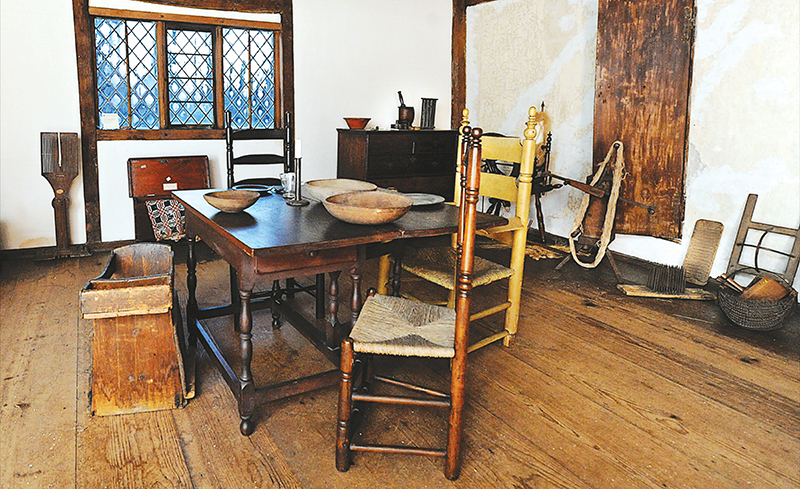Katherine Chaison fell for museums early.
Growing up in the Washington, D.C., area, she loved visiting the Smithsonian museums dedicated to natural history, art, and, especially, American history. The artifacts they contained captivated her. “Objects are something people can relate to in a way we don’t relate to words on a page,” she says.
It is a feeling she has held on to through the years and that she now brings to her job as curator of the Ipswich Museum.
Positioned on the edges of downtown Ipswich, the museum includes three separate properties all intended to impart the art and history of one of Massachusetts’ oldest towns. The large Federal-style Heard House, built in 1800, holds the museum headquarters and most of its exhibits. Across the street, the Knight House is a painstakingly recreated replica of a timber-framed house from 1657.
And just a few yards away, the Whipple House lets visitors explore the actual home of a 17th-century family. The house was originally built for military officer and businessman Captain John Whipple, as a way to demonstrate his wealth. Built in 1677—the structure’s central beam has been carbon-dated to confirm the year— the house exemplifies Colonial (often called “First Period”) New England architecture.
Downstairs, the main hall includes a massive hearth, wide plank floors, and a smattering of furniture and household equipment. “The hall would have been the main room of the house,” Chaison says, “a more rustic version of today’s great rooms.” The second room downstairs, a more formal parlor, was added on years after the hall was built, when Whipple had enough money to expand.
The home’s residents would have cooked, worked, received guests, and even slept in these two rooms, Chaison says. “Nobody had their own room,” she says. “That sense of privacy and space is a much more modern idea.”
|
It is, however, a building that captures not just history but also the way that history is made. “The walls, today a dull cream color, would almost certainly have been painted with vibrant colors and patterns,” Chaison says. Some recent restoration work found evidence that polka dots once adorned the parlor walls. It is simply the passage of time that has muted the colors and given us our mistaken impressions of Colonial de?cor. “Our ancestors were not nearly as boring and drab as we think they were,” she jokes.
The house, originally located down near the present-day railroad tracks, was purchased, restored, and moved to its current spot during the Colonial Revival movement of the early 20th century. Perched on a sideboard in the main hall, a black-and-white photograph shows the house being moved in 1927 from its original location to a more open setting.
Upstairs, which is not always open to visitors, a bedroom features a four-poster bed draped with a lace canopy. Though it is now believed that that depiction of the era is completely wrong, the room is kept in place to show how Colonial Revivalists perceived the First Period. It is a room that demonstrates the evolution of history. “It’s a more romanticized version of what life was like back then,” she says. “Each generation brings their own ideas to how they interpret history.”
Chaison’s career path has also evolved over the years. Though Chaison, 32, has always loved history, it was not a foregone conclusion that she would end up in the museum field. When she began her studies at the University of Rochester, she intended to be a computer science major. But during her senior year, professor pointed out that she had taken so many history classes that she could easily declare a major in that subject. “It took me three years to realize American history was what I was most interested in,” she says.
While working with the university’s rare books librarian, Chaison became enamored with Victorian scrapbooks. The librarian saw her interest and suggested she consider pursuing museum studies at the Cooperstown Graduate Program. Chaison was sold when she saw the collection of objects to which the program would give her access: toys, furniture, dishes, clothes, and much more. “It was like a magical warehouse,” she remembers.
Although her job in Ipswich has involved an immersion in the colonial period, her own area of special interest is the industrialization of the Victorian age. In the seven years she has worked at the museum, she has developed some expertise in the architecture, culture, and commerce of the region. She’s even learned the ins and outs of lace making, once a major industry in Ipswich.
She laughs. “That was not something I was expecting seven years ago.” ipswichmuseum.org

 The Whipple House dates back to 1677
The Whipple House dates back to 1677